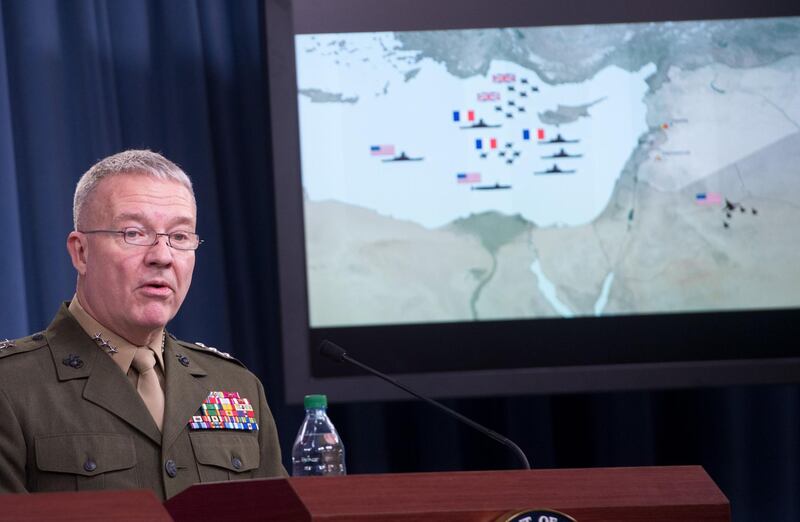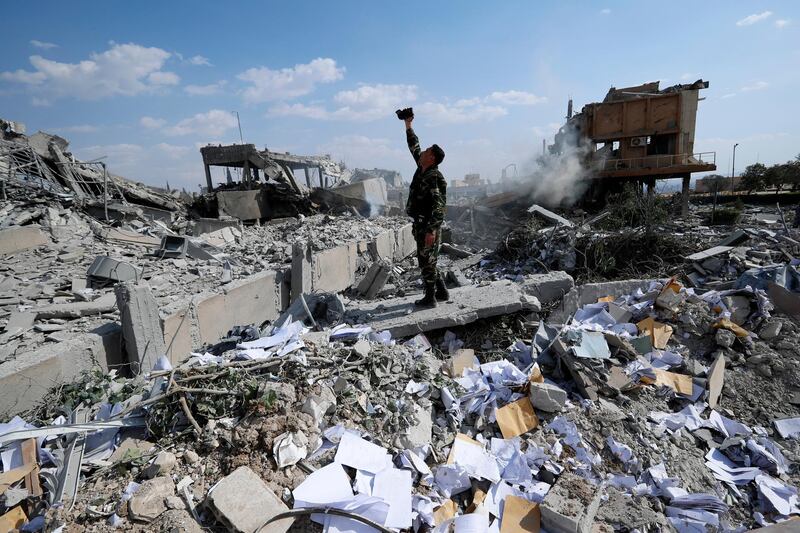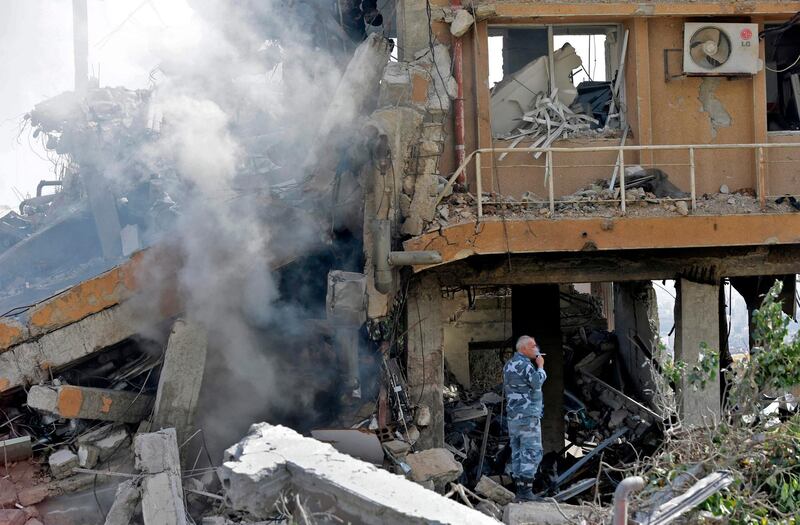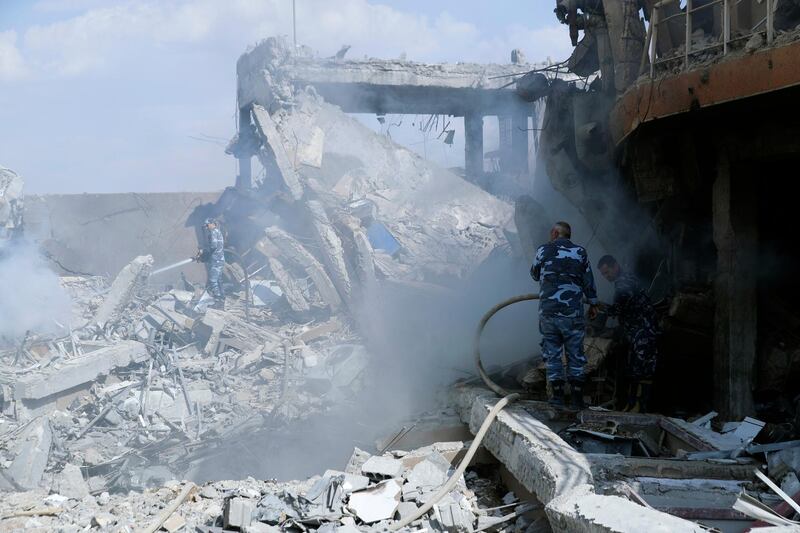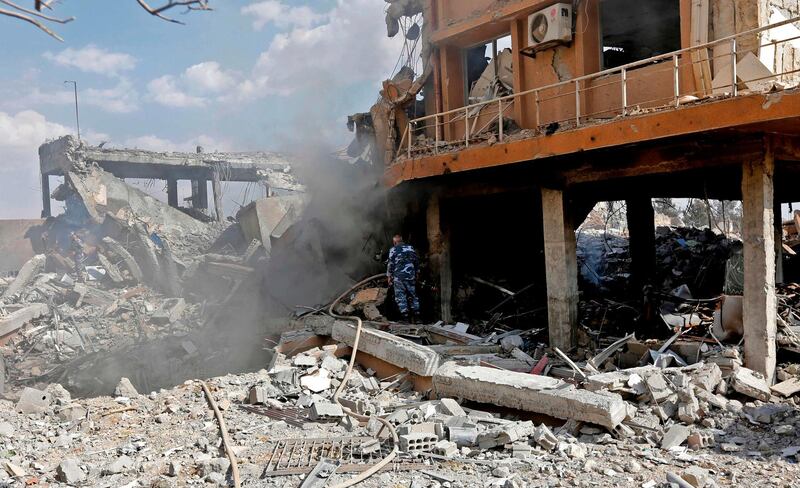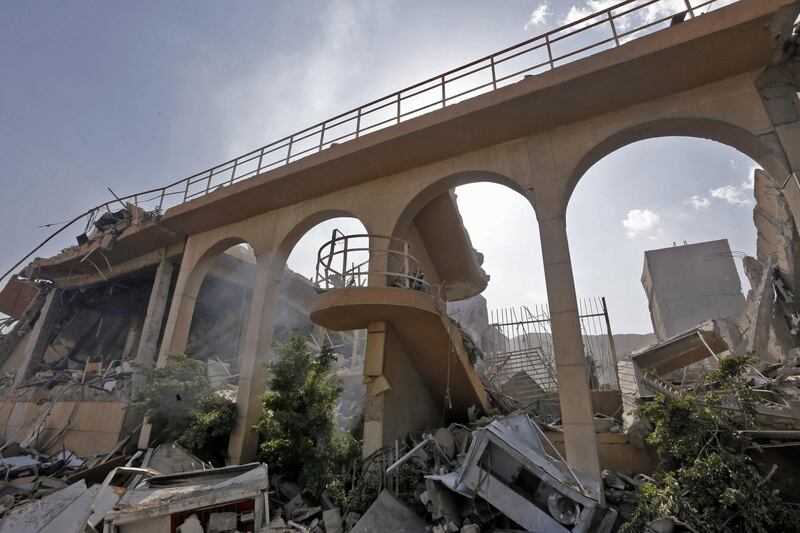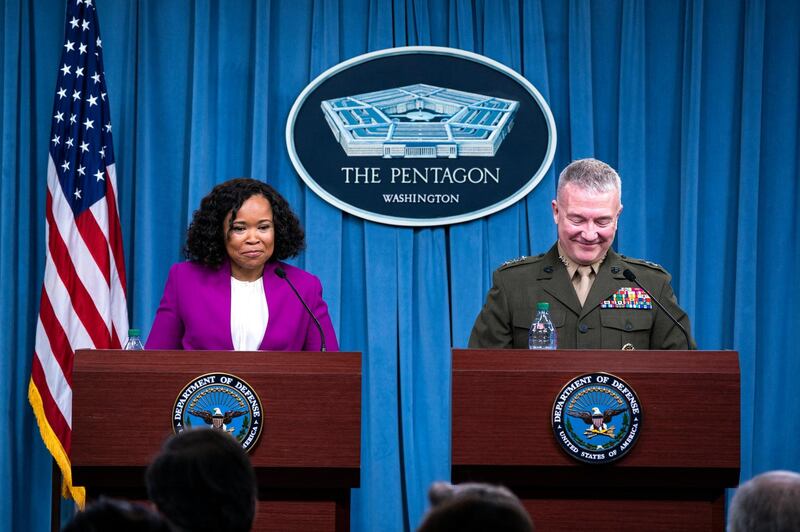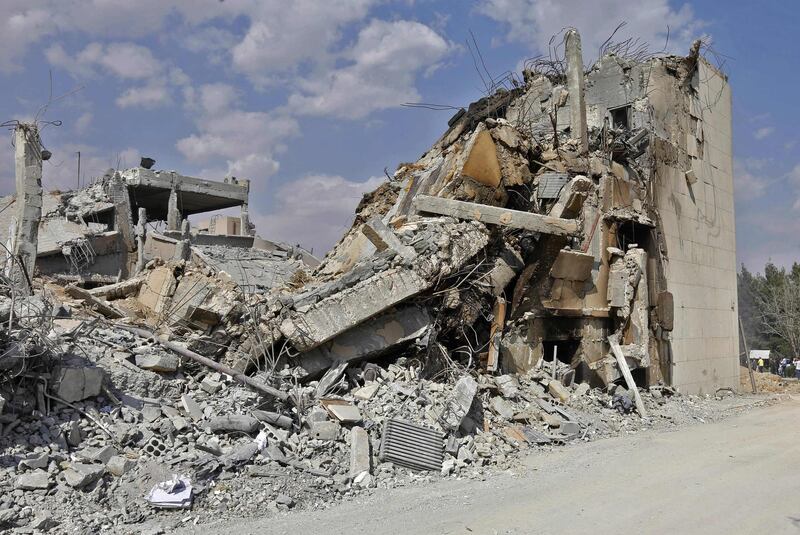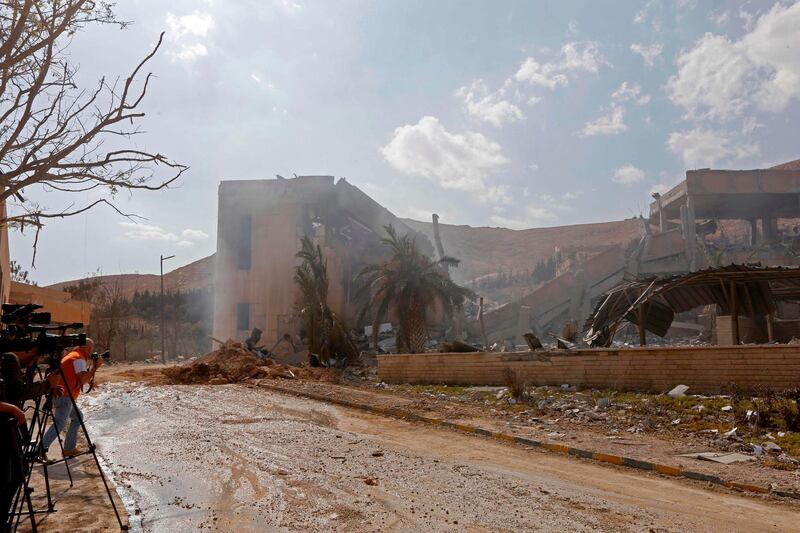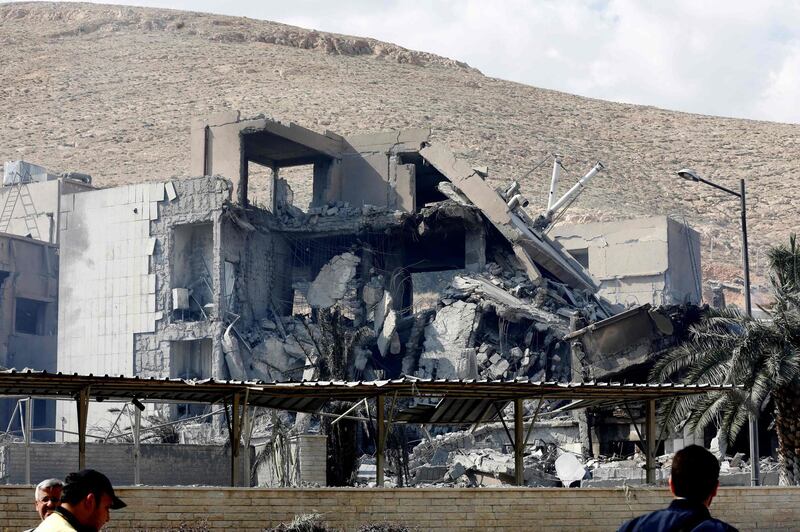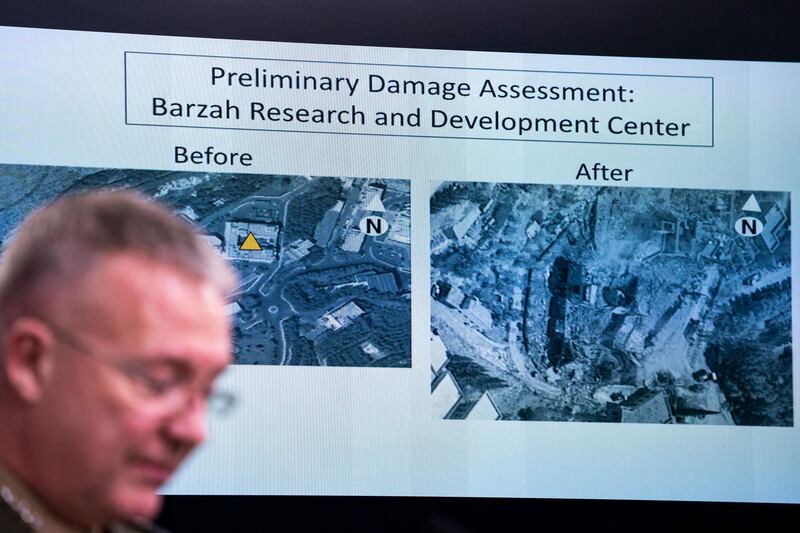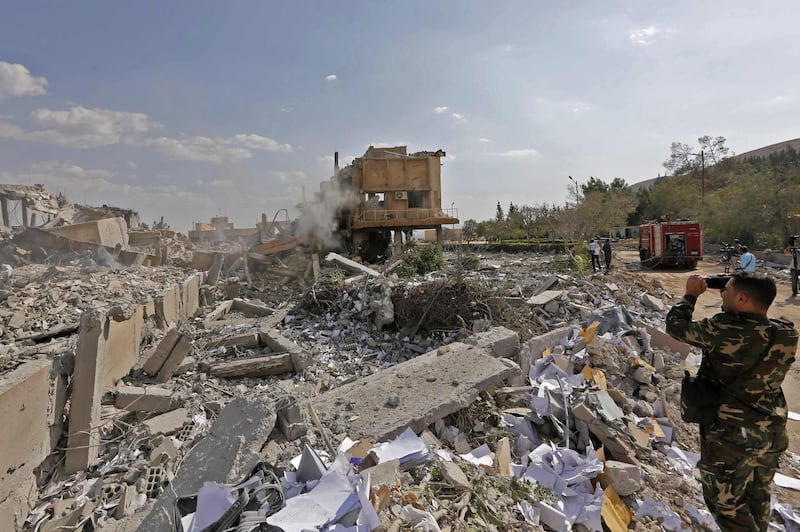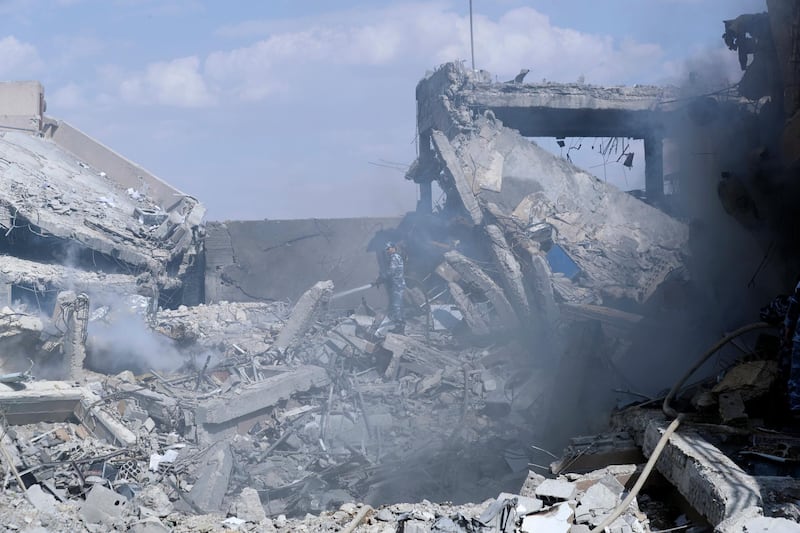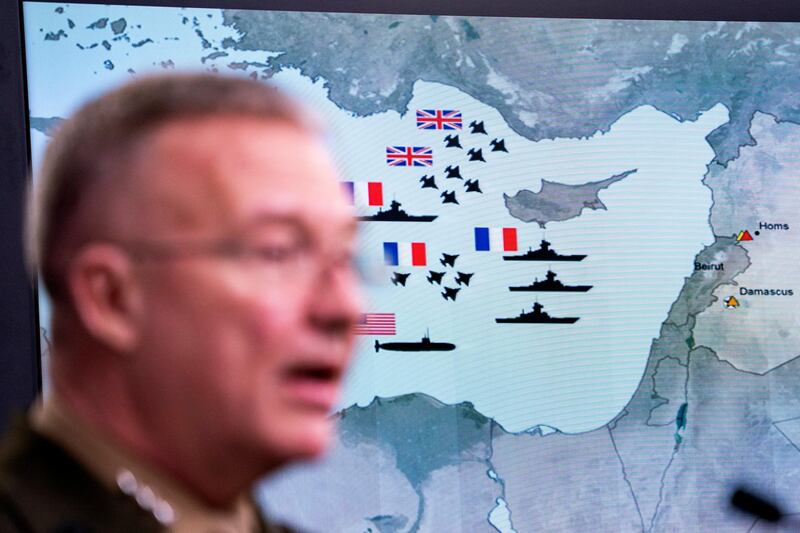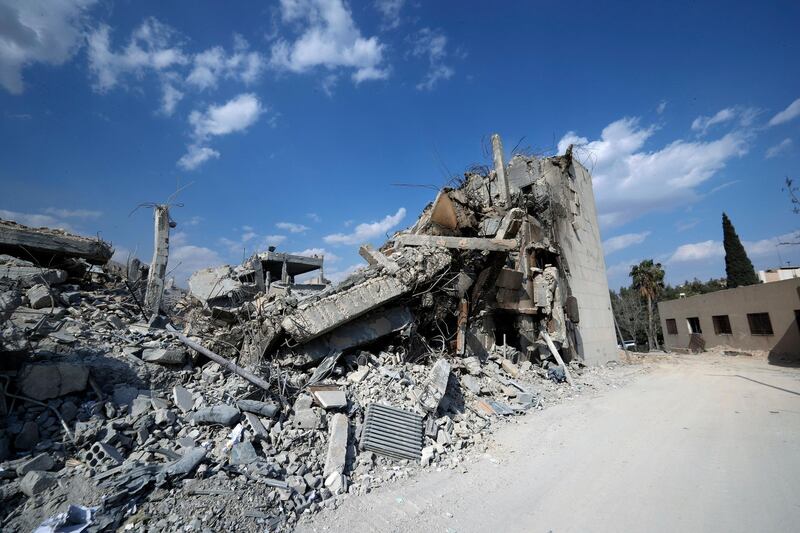One hundred and five guided weapons, the majority of them Tomahawk cruise missiles, launched at three targets in Syria in an attack at “the heart of the Syrian chemical weapons programme" early on Saturday, has "significantly degraded [President Bashar Al Assad’s] ability to use chemical weapons ever again", the United States said.
The co-ordinated air campaign in Syria by the US, UK and France, launched from ships, a submarine and warplanes, targeted a research centre, two chemical weapons facilities and an Assad regime command centre in response to his use of chemical weapons in rebel-held Douma, exactly a week ago.
The air strikes, within minutes of each other at 4am local time in Syria, were announced by Donald Trump in a televised statement from the White House, that followed a week of deliberations inside the administration.
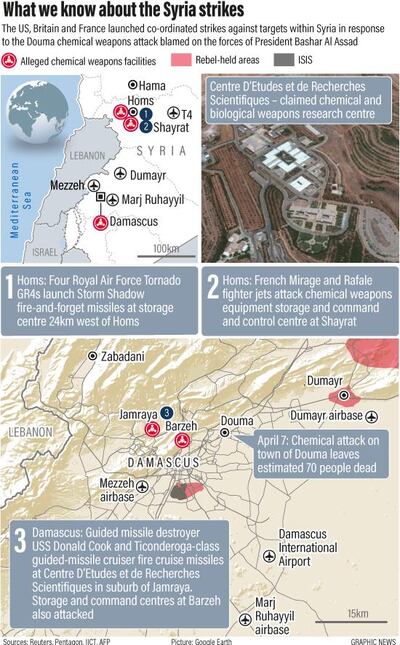
The Pentagon said the three main targets were successfully hit.
Lieutenant General Kenneth McKenzie, the director of the Joint Chiefs of Staff at the Pentagon, said the US-led airstrikes against Syria has been "a very serious blow". They were precise, overwhelming and effective, he said.
.@ChiefPenSpox Dana W. White and Marine Lt. Gen. Kenneth F. McKenzie Jr., director, Joint Staff, provide an update … https://t.co/qi7UZieaJM
— Department of Defense 🇺🇸 (@DeptofDefense) April 14, 2018
"As of right now we're not aware of any civilian casualties," he said in a morning briefing US time on Saturday.
"All the options looked at ways to balance minimising collateral damage against maximum effect. These three targets seemed to hit the sweet spot and do that," General McKenzie said.
However, he said that Syria had fired about 40 unguided surface-to-air missiles, most of which didn't launch until after the allied strike was over. These missiles may have come down in populated areas, he said.
"When you shoot iron into the air without guidance, it's going to come down somewhere," General McKenzie said.
Damascus's allies said earlier that the buildings hit had been evacuated in advance.
The first target was the Syrian Scientific Studies and Research Centre near Damascus, the second was a chemical weapons storage facility west of Homs assessed to be the primary location of nerve agent sarin and precursor production equipment, and the third was a chemical weapons storage facility as well as a military command post, within the vicinity of the second target.
Russia had promised to respond to any attack on its ally, and its military said that 103 cruise missiles were fired including Tomahawk missiles, but that Syrian air defence systems managed to intercept 71 cruise missiles.
But the Pentagon said the United States had "deconfliction" contacts with Russia before and after the strikes, that Syrian air defence systems had been largely ineffective and there was no indication that Russian systems had been employed.
General McKenzie said that none "of our aircraft or missiles involved in this operation were successfully engaged by Syrian air defences."
McKenzie countered that "the Syrian response was remarkably ineffective in all domains."
_______________
Read more:
[ Mission Accomplished: Trump declares success in Syria ]
[ Bashar Al Assad: Western strikes make Syria more determined ]
[ Minus a decisive intervention, Syria will see more bloodshed ]
_______________
According to US officials, the operation comprised three US destroyers, a French frigate and a US submarine. The vessels were located in the Red Sea, the Arabian Gulf and the eastern Mediterranean.
The US Air Force fired air-launched cruise missiles from B-1 bombers, and French and British planes also shot cruise missiles toward the targets.
The prime target of the operation was the Barza Research and Development Centre in the greater Damascus area, which General McKenzie said was "one of the most heavily defended aerospace areas in the world."
Barza took the brunt of the fire, with 57 Tomahawk cruise missiles and 19 Joint Air to Surface Stand-off missiles.
Ten hours after the missiles hit, smoke was still rising from the remains of a research facility, according to Reuters.
This military facility was a Syrian centre for the research, development, production and testing of chemical and biological warfare technology, the US said.
This is the second time the United States struck Assad’s chemical network. In April 2017, Trump ordered an attack against the Shayrat air base after Syrian aircraft at the base dropped bombs containing sarin. Some 58 missiles hit the aircraft and chemical weapons facilities at the base.
Despite severely damaging the infrastructure with the strikes, General McKenzie said the Pentagon would not rule out that the Assad government still had capability to use such weapons again.
"There's still a residual element of the Syrian programme that's out there," he said.
"I'm not going to say that they're going to be unable to continue to conduct a chemical attack in the future. I suspect, however, they'll think long and hard about it."
If Mr Al Assad used chemical weapons again, "the United States is locked and loaded" to strike again, the US Ambassador to the United Nations said.
"When our president draws a red line, our president enforces the red line," Nikki Haley said, relaying a message from Mr Trump at an emergency Security Council meeting on Syria
